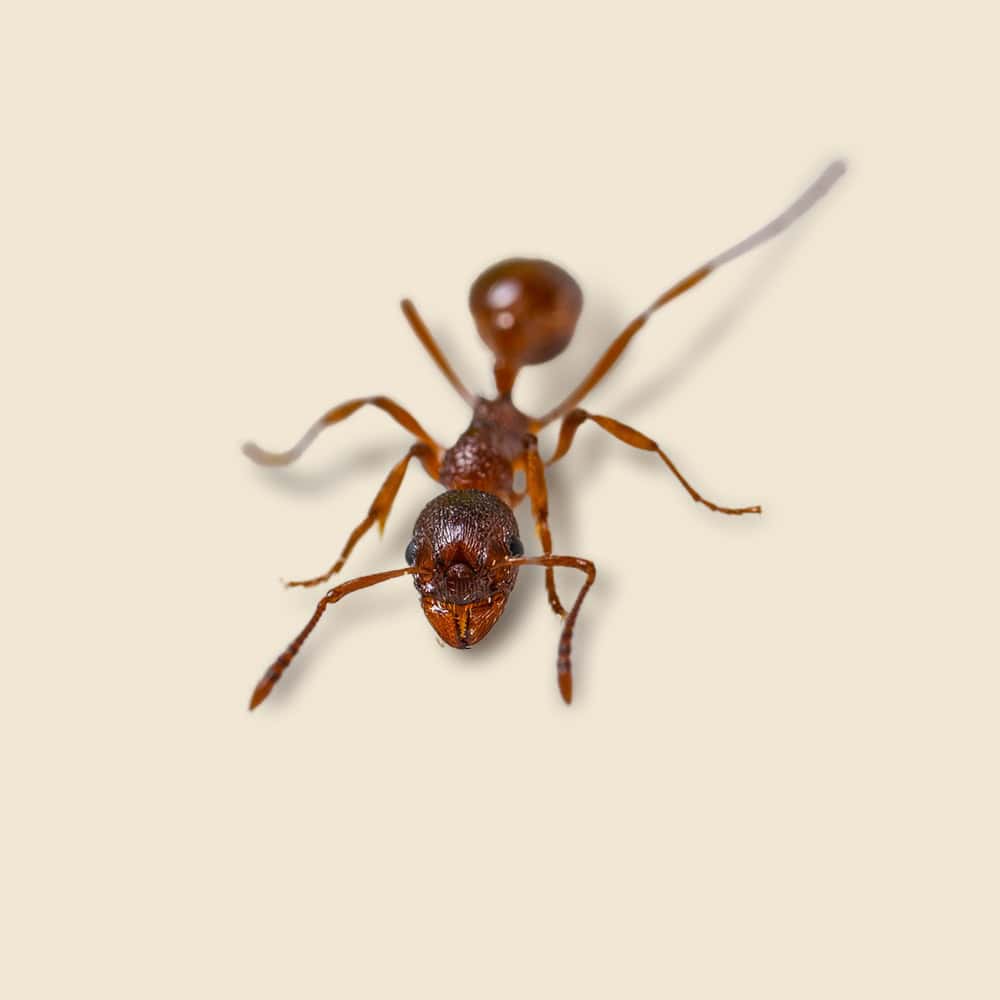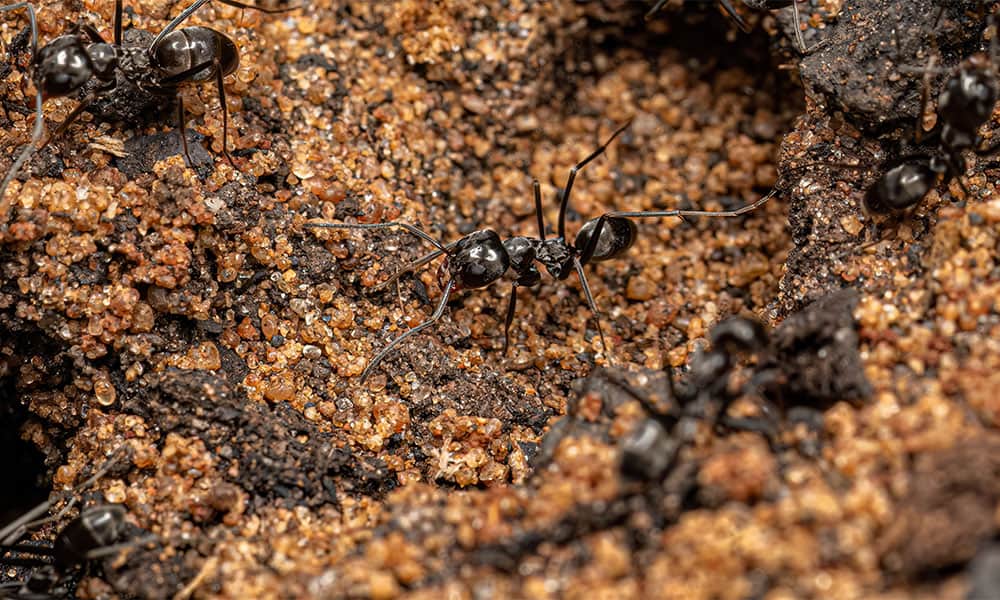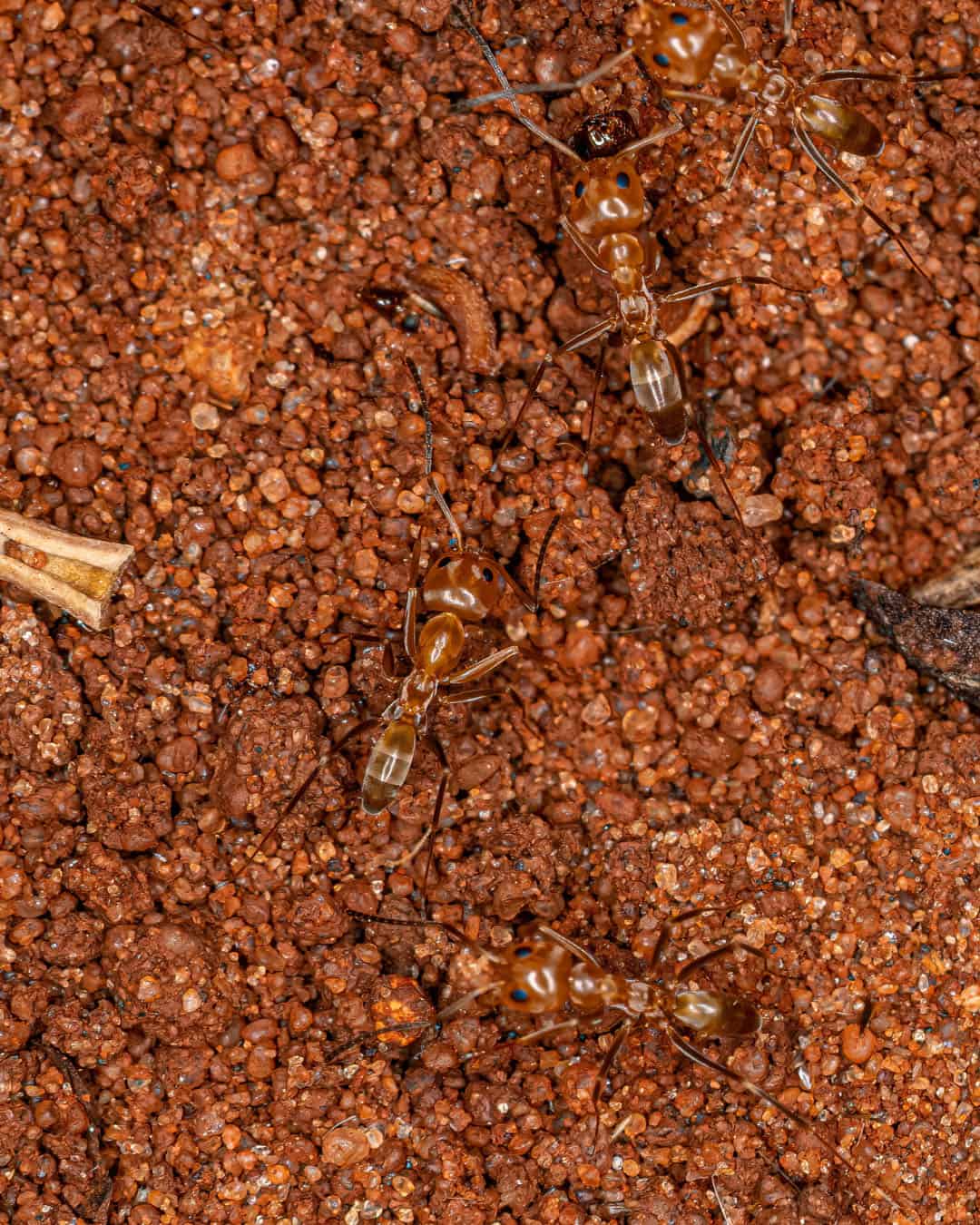Pyramid Ant Facts & Information
Pyramid ants, known for their distinctive pyramid-shaped thorax and aggressive behavior, can be a significant pest in both residential and commercial environments. Their presence can be particularly troublesome due to their large colonies and tendency to invade structures.

Dorymyrmex insanus
What You Need To Know About Pyramid Ants
What do pyramid ants look like?
Pyramid ants, also known as Cataulacus pyramidalis, are small to medium-sized ants with a distinctive appearance. They typically measure about 1/8 to 1/4 inch in length. Their most notable feature is their pyramidal thorax, which gives them their name. They are usually reddish-brown to dark brown in color and have a smooth, shiny exoskeleton.
What do pyramid ants eat?
Pyramid ants are omnivorous and feed on a variety of substances, including insects, nectar, and other sugary liquids. They are known to forage for both plant-based foods and small prey, making them versatile in their diet.
What sort of habitat do pyramid ants live in?
Pyramid ants are typically found in tropical and subtropical environments. They prefer forested areas, gardens, and occasionally urban areas where they can find shelter. They build their nests in soil, under rocks, or within decaying wood, creating small mounds or shallow burrows.
How do pyramid ants commonly behave?
Pyramid ants are known for their distinctive pyramidal thorax and relatively slow, deliberate movement. They are social insects, living in colonies that can range from a few dozen to several hundred individuals. They establish foraging trails to locate food sources and are less aggressive compared to some other ant species.
Did you know this about pyramid ants?
Pyramid ants are named for the unique shape of their thorax, which is raised into a pyramid-like structure. This distinctive feature helps in identifying them and is a key characteristic in differentiating them from other ant species. They are also known for their role in their ecosystems as both predators and scavengers. Their ability to adapt to various environments and their interesting physical traits make them a fascinating species for entomologists and ant enthusiasts alike.
Understanding Pyramid Ant Infestations
Understanding pyramid ant infestations is crucial for effective management. These ants are typically found in sandy or loose soil where they build conspicuous, pyramid-shaped mounds. They are aggressive when defending their nests and can deliver painful stings. Pyramid ants are opportunistic foragers, often entering homes in search of food and moisture, which can create problems for homeowners.

How Hearts Handles Pyramid Ant Treatment
Hearts Pest Management employs an integrated pest management approach to handle Pyramid Ant infestations.
Pyramid Ant Inspection
Pyramid Ant Treatment
Pyramid Ant Prevention
Educational Resources

Think You Might Have a Pyramid Ant Infestation?
At Hearts Pest Control, we understand the challenges associated with Pyramid Ant infestations and are here to provide professional solutions tailored to your needs. Flourishing in warm and humid climates, they are prevalent in many regions, including San Diego County, Orange County, and Los Angeles County.